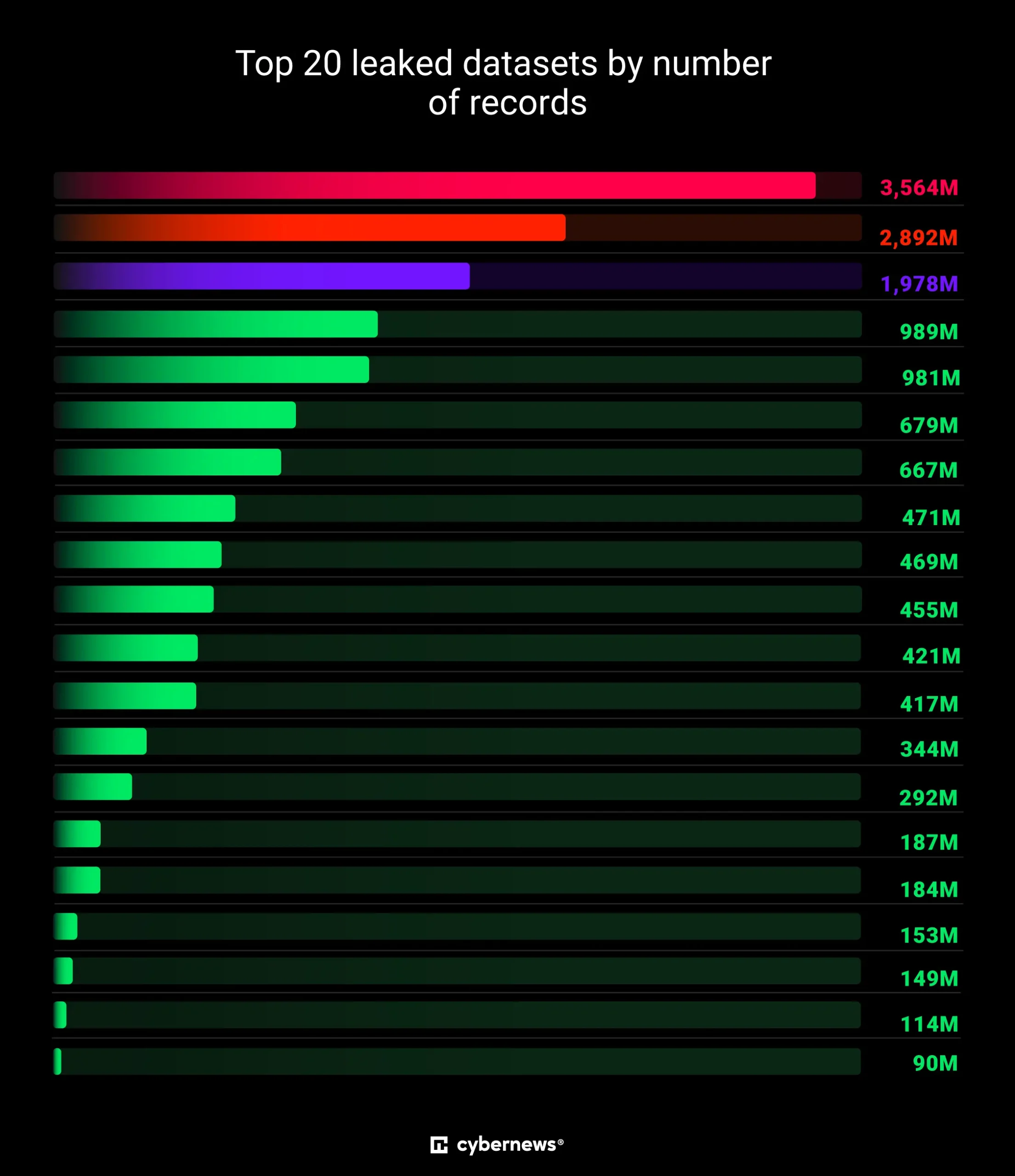World’s Largest Data Breach That You Probably Never Heard Of
In what is now being called the largest data breach in history, cybersecurity researchers have uncovered a massive leak involving over 16 billion records. The exposed data includes login credentials, passwords, and authentication tokens from some of the most widely used platforms in the world, including Apple, Facebook, Google, GitHub, Telegram, and even various government services.
The leaked records originated from a series of unsecured cloud databases and are believed to be the result of coordinated activity by multiple infostealer malware networks. This 16 billion record data breach has stunned the cybersecurity community, prompting urgent warnings for individuals and organizations alike to change passwords and reevaluate their security protocols.
How the Breach Was Discovered
Cybersecurity experts had been monitoring the internet since the beginning of the year and discovered over 30 exposed datasets, each containing between tens of millions to over 3.5 billion records that has been confirmed by Forbes. While some breaches were previously reported in isolation, the scale and structure of this collective leak have never been seen before.
Most of the data was structured in a uniform format—website URLs followed by usernames and passwords. Researchers described the information as current, detailed, and “weaponizable,” with data that appears to have been gathered through modern malware attacks and credential stuffing operations.
This data leak is not a recycled breach from the past; instead, it consists of fresh, high-value credentials that can be used immediately by cybercriminals for phishing campaigns, identity theft, ransomware infiltration, and account takeovers.
What Makes This Breach Different
Unlike typical breaches where a single service is compromised, this incident represents a mega compilation of multiple data leaks—likely from misconfigured cloud services and compromised endpoints infected by infostealer malware.

Some datasets were anonymously named (“logins”, “credentials”), while others hinted at their origin, such as records named after the Russian Federation, Telegram, or malware types. One particularly alarming dataset contained over 455 million records, and another targeted Portuguese-speaking users with more than 3.5 billion credentials.
Cybersecurity specialists have warned that even if only a small percentage of the leaked data is used maliciously, millions of individuals could be at risk.
Industry’s Quiet Response
Darren Guccione, CEO of a cybersecurity firm, noted that such a massive breach highlights “just how easy it is for sensitive data to be unintentionally exposed online.” He called the leak a “security iceberg” warning that many more such breaches may be quietly occurring due to poor cloud configuration and weak endpoint defenses.
This comes as major organizations, including European bank UBS, confirmed that employee data was compromised through a third-party vendor attack. In the UBS case, around 130,000 employees had their information leaked after a ransomware group targeted a supplier. This event emphasizes the growing risks of data leaks via supply chains.
Cybersecurity experts also warned that recent developments—such as the Mother of All Breaches (MOAB) earlier this year, which exposed 26 billion records—suggest this may not be an isolated case, but part of a larger trend of industrial-scale credential harvesting.
What Should Individuals and Businesses Do Now?
For Consumers:
-
Immediately change all passwords, especially those reused across platforms.
-
Use a password manager to create strong, unique passwords.
-
Enable multi-factor authentication (MFA) on all accounts.
-
Regularly monitor your email and credentials with dark web monitoring tools.
-
Avoid clicking suspicious links or downloading unknown files.
For Organizations:
-
Adopt zero-trust security models to limit access by default.
-
Audit and secure all cloud environments and storage configurations.
-
Invest in endpoint detection, infostealer detection tools, and employee training.
-
Establish comprehensive incident response plans for credential leaks.
The Unseen War Of Cybersecurity
This 16 billion passwords leaked event is more than just another data breach; it is a critical wake-up call. It reinforces the notion that cybersecurity is no longer just a technical issue—it is a shared responsibility between users, organizations, and infrastructure providers.
Javvad Malik, a well-known cybersecurity expert, stated, “Organizations need to protect users, and people need to remain vigilant and mindful of any attempts to steal login credentials.” This incident makes it clear: the time to act is now.
Strong password hygiene, encryption, and authentication practices are essential defenses in an era where data leaks of this magnitude are no longer theoretical—they are a grim reality.


